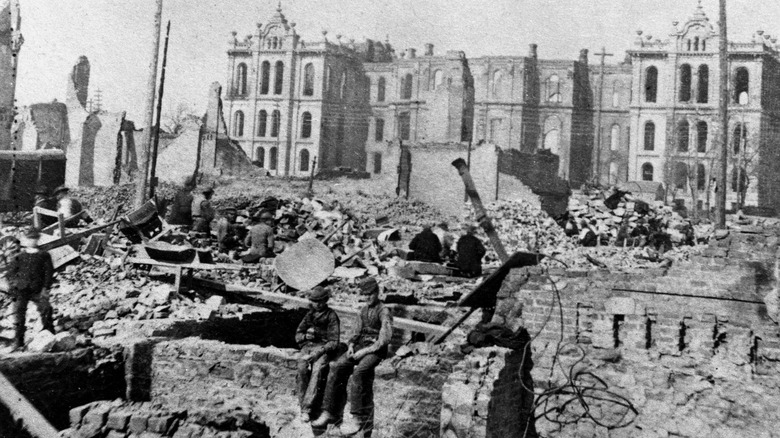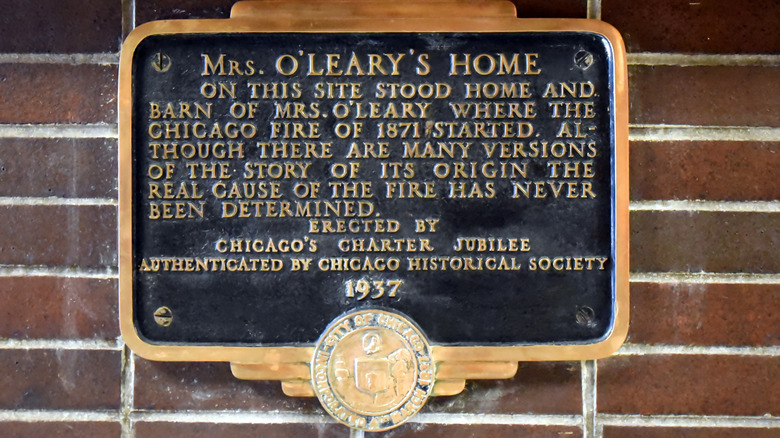Here's How The Great Chicago Fire Really Started
According to National Geographic, The Great Chicago Fire began 150 years ago — October 8, 1871. It had been 22 days since it had last rained in the city; the buildings and sidewalks were mostly made out of wood (via Smithsonian Magazine). In other words, it was the perfect recipe for disaster. Per Chicago Magazine, the Chicago Fire Department had been fighting fire after fire that first week of October. Overworked and exhausted, there was no time to rest; another fire had broken out in a barn owned by Patrick and Catherine O'Leary.
For years, legend had it that Mrs. O'Leary's cow had kicked over a lantern and caused the fire (per the Chicago Sun-Times). But this was a baseless fabrication intended to be an ethnic slur against the city's Irish population. Recently, scientists have also suggested that a meteor shower is to blame (per Chicago Now). Although the true cause of the fire is still a mystery, it did in fact start at the O'Leary's at 137 DeKoven Street, on the city's Southwest Side. The fire quickly spread and moved towards the north and the east. It eventually advanced into Chicago's business district (via History). The fire burned into the following day until rain helped put it out. By then though, it was too late; Chicago was in ruins. When the flames finally subsided, up to 300 people had died and 100,000 had no homes (via Smithsonian Magazine). Per National Geographic, over 17,000 buildings and 73 miles of streets were destroyed.
The Great Chicago fire left 100,000 homeless
History states that the cost of the damages totaled $200 million — $4 billion in 2021 dollars. Thus began the daunting task of reconstruction. Despite the devastation, the water, sewage, transportation systems and major industries were not damaged (via the Chicago Architecture Center). This allowed materials to be brought into the city to rebuild what had been lost. Moreover, laws were changed to ensure that new buildings were constructed using fireproof material such as brick or marble.
According to the Driehaus Museum, Chicago built itself back up at an unprecedented rate due in part to the Gilded Age. This brought in new technologies as well as new immigrants, both which contributed in rebuilding the city. Economic and population growth followed. A decade or so later, skyscrapers began to be built, and by 1893, Chicago was home to over 1 million people. That same year, Chicago was chosen to host the World's Fair.
The Chicago Fire Department training academy now stands at the former site of the O'Leary's home. After the fire, Catherine O'Leary became a scapegoat, as many blamed her and her cow for the fire. She became a recluse and died in 1895. According to a 2012 Smithsonian article, both her and the cow were exonerated from any blame by the Chicago City Council in 1997.

